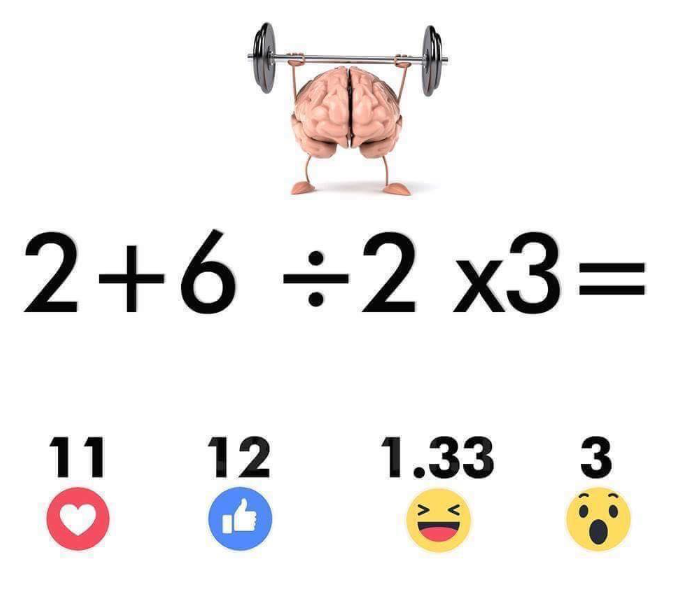Math puzzles often appear straightforward, but they can easily turn into mind-boggling challenges. One such expression is 2 + 6 : 2 x 3, which might seem simple at first glance. Yet, how you interpret and solve it can lead to different answers, sparking debates among math enthusiasts. Let’s dive deep into this intriguing problem, unravel its mysteries, and explain why such puzzles are valuable for sharpening our minds.
Why Do Simple Math Expressions Cause So Much Debate?

Mathematical expressions like 2 + 6 : 2 x 3 often lead to confusion due to misunderstandings about the order of operations. If you’ve ever seen heated online discussions about these types of problems, you know how passionate people can get. But why? The root of the issue lies in misinterpreting basic math rules or overlooking critical steps.
The Order of Operations: Your Key to Solving Math Problems
To solve any math expression correctly, you must follow the order of operations, often remembered by the acronym PEMDAS:
- P for Parentheses
- E for Exponents
- MD for Multiplication and Division (left to right)
- AS for Addition and Subtraction (left to right)
Here’s the crucial part: Multiplication and division are treated equally, and so are addition and subtraction. This means you solve them in the order they appear from left to right, not based on a perceived hierarchy.
Common Missteps with Order of Operations
- Ignoring Left-to-Right Priority:
Some mistakenly think multiplication always comes before division, or addition always precedes subtraction, regardless of their order in the equation. - Misapplying PEMDAS:
Many assume they must finish all multiplications before moving to divisions or complete all additions before addressing subtractions. This misunderstanding often leads to errors. - Overlooking Key Details:
A small oversight—like skipping a step or grouping numbers incorrectly—can completely change the final answer.
Now, let’s apply this knowledge to solve the expression 2 + 6 : 2 x 3 step by step.
Step-by-Step Solution to 2 + 6 : 2 x 3
Breaking down the problem carefully ensures accuracy. Follow these steps to solve it:
The Expression:
2 + 6 : 2 x 3
Step 1: Perform Division and Multiplication (Left to Right)
In the order of operations, division and multiplication are tackled before addition, but they’re solved as they appear from left to right.
- First, calculate 6 : 2:
6 ÷ 2 = 3
The expression now becomes:
2 + 3 x 3
- Next, solve 3 x 3:
3 × 3 = 9
Now, the expression is:
2 + 9
Step 2: Perform Addition
Finally, add 2 + 9:
2 + 9 = 11
The Final Answer:
The correct result of 2 + 6 : 2 x 3 is 11.
Why Do People Get Different Answers?
If you didn’t get 11, don’t worry—you’re not alone. Many people misinterpret the problem, leading to different answers. Here’s why this happens:
- Misinterpreting Multiplication Priority:
Some incorrectly group the operations, treating the problem as 6 : (2 x 3) instead of solving it step by step. This results in:
6 ÷ 6 = 1 - Skipping Left-to-Right Rules:
Others may solve all multiplications first, followed by divisions, disrupting the intended sequence. This misunderstanding changes the final outcome.
These errors highlight how crucial it is to stick to the order of operations and solve problems systematically.
What Can We Learn from Math Puzzles Like This?
Puzzles like 2 + 6 : 2 x 3 are more than just fun brainteasers. They serve as powerful tools for developing critical thinking skills. Here’s what they teach us:
- Attention to Detail:
Small errors can lead to wildly different outcomes, emphasizing the importance of precision. - Logical Thinking:
By following the order of operations, you learn to approach problems step by step, ensuring accuracy. - Problem-Solving Skills:
Tackling tricky puzzles helps build resilience and encourages creative thinking.
Join the Conversation: What Did You Get?
Now that you know the correct answer, take a moment to reflect on your own approach. Did you solve it correctly on your first try, or did you get stuck somewhere along the way? Share your thought process and solution with others—it’s always fascinating to see how people think!
Conclusion: The Beauty of Math Lies in the Details
The math expression 2 + 6 : 2 x 3 is a great reminder that even simple-looking problems can challenge our understanding. By mastering the order of operations and practicing puzzles like this, you not only boost your math skills but also improve your overall logical reasoning.
So, next time you come across a tricky expression, don’t shy away. Embrace the challenge, and remember that the joy of solving lies as much in the process as in the final answer. Ready for your next math puzzle? Dive in and keep that brain sharp—you’ve got this!


